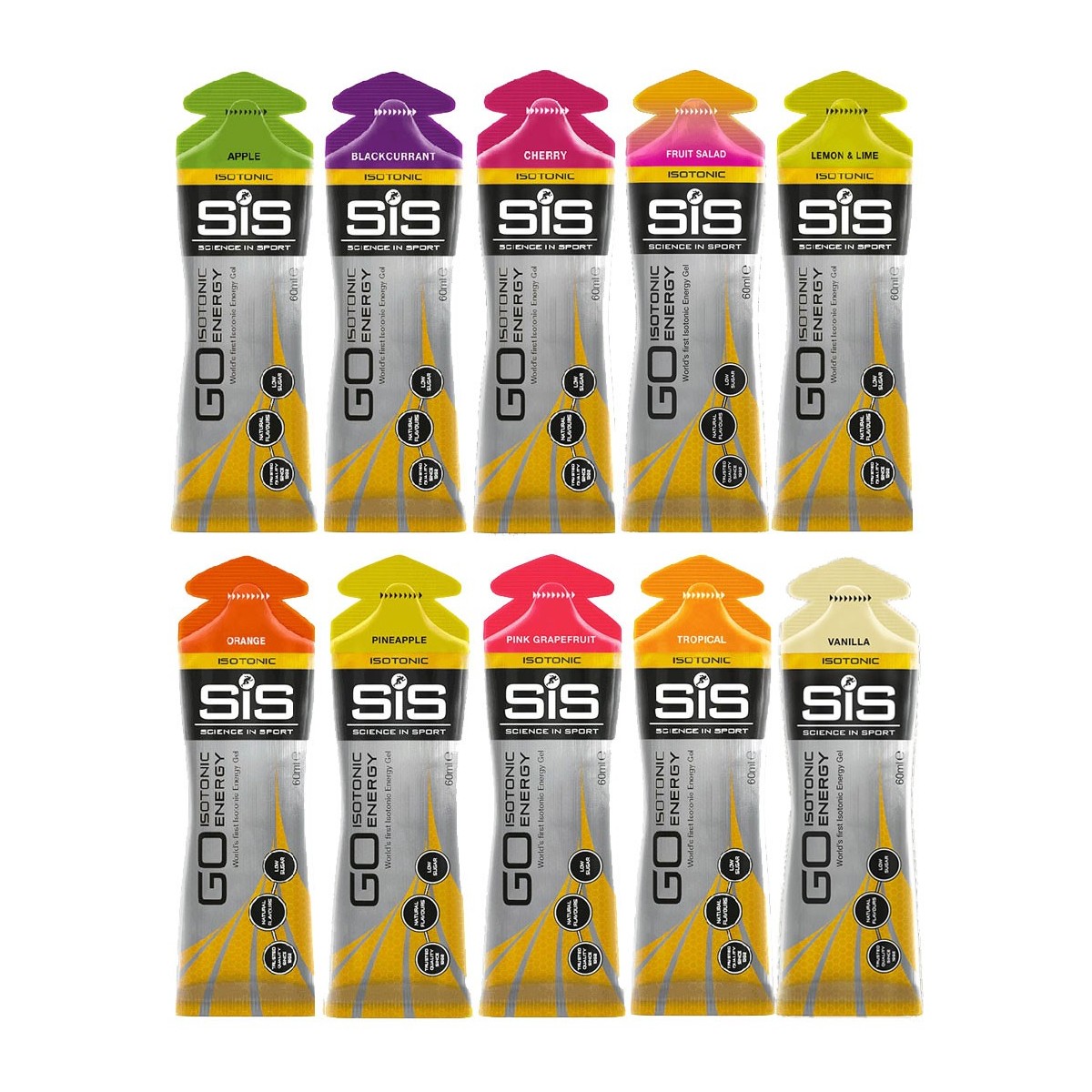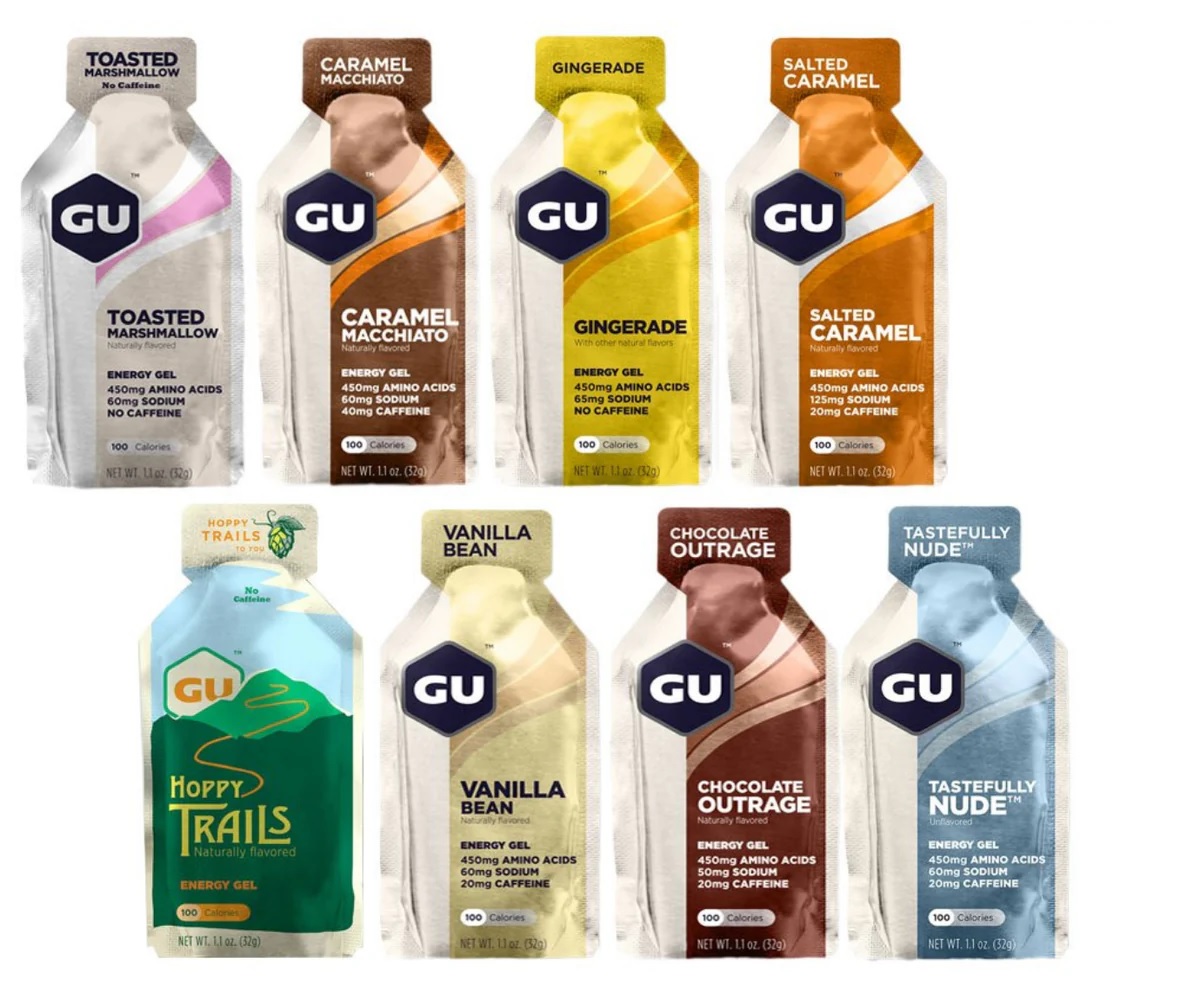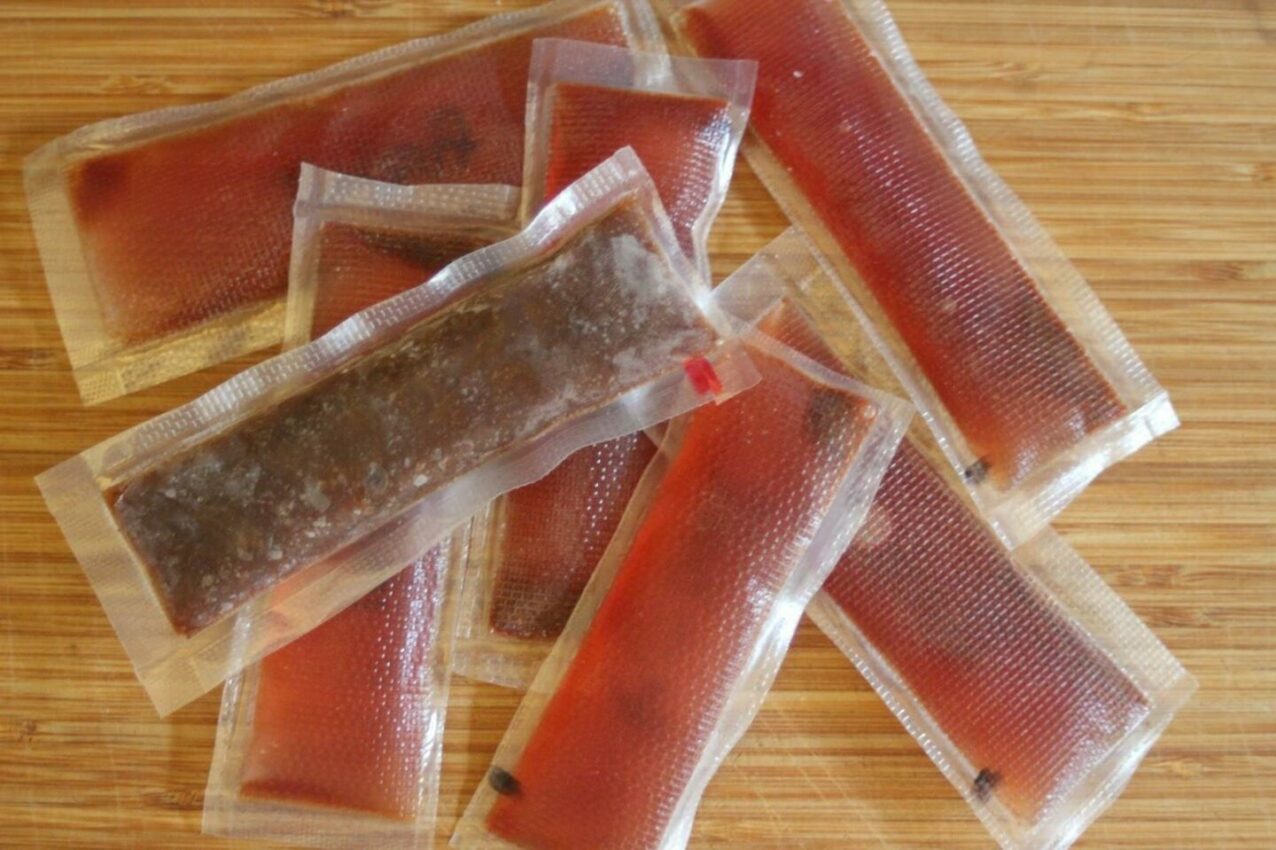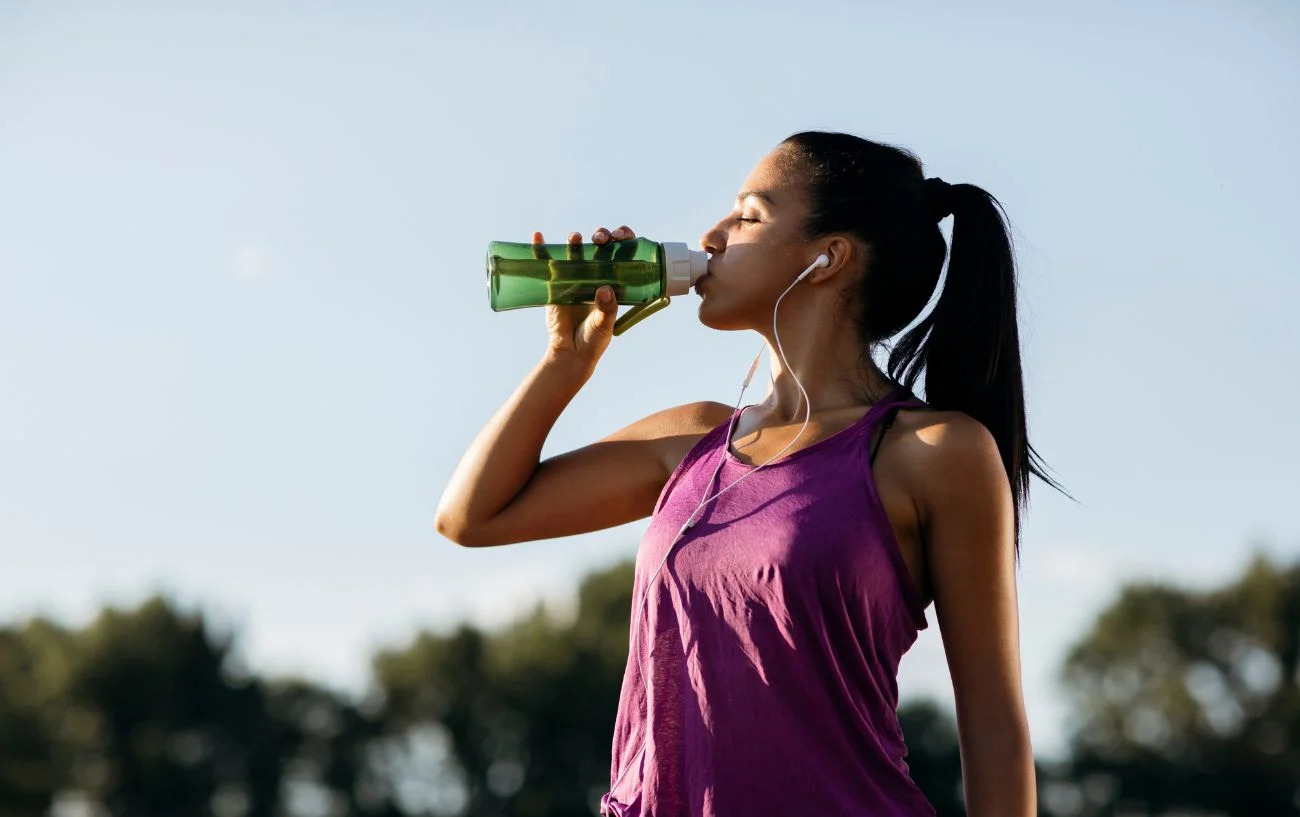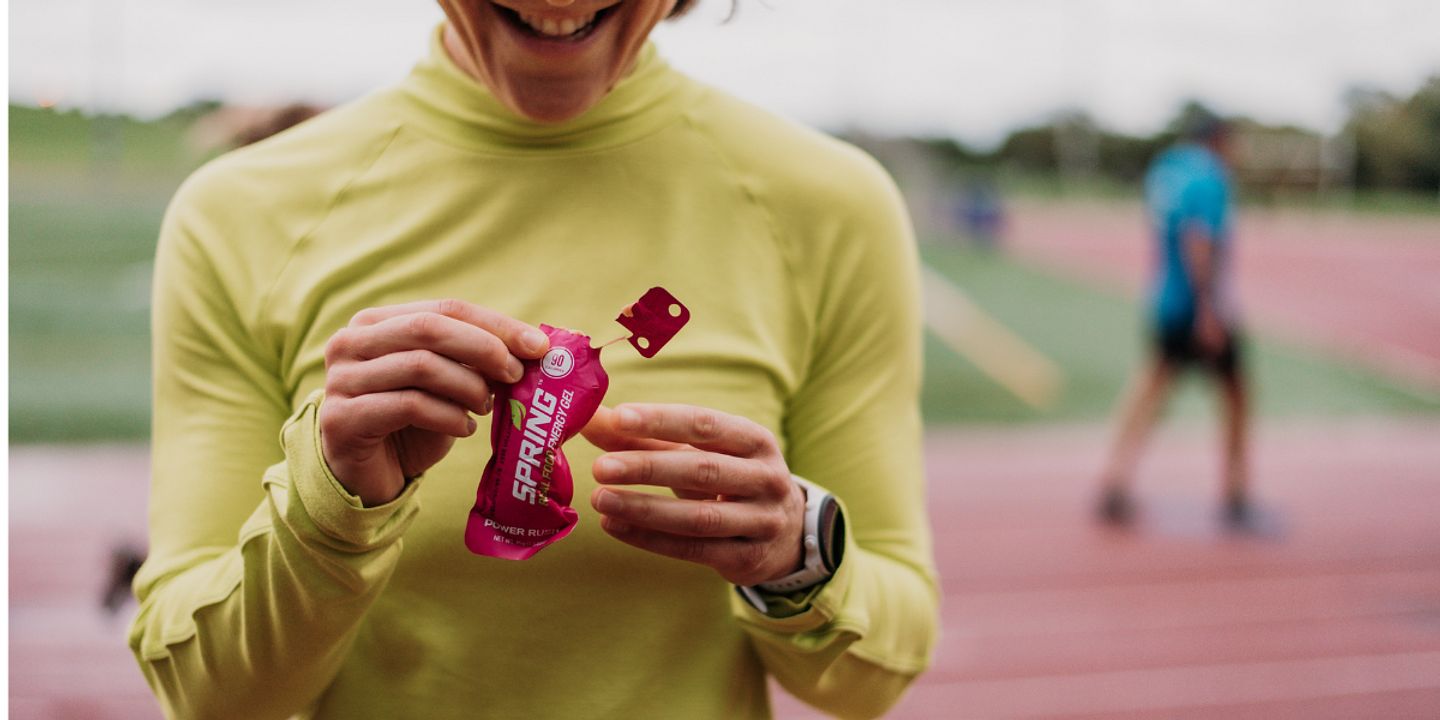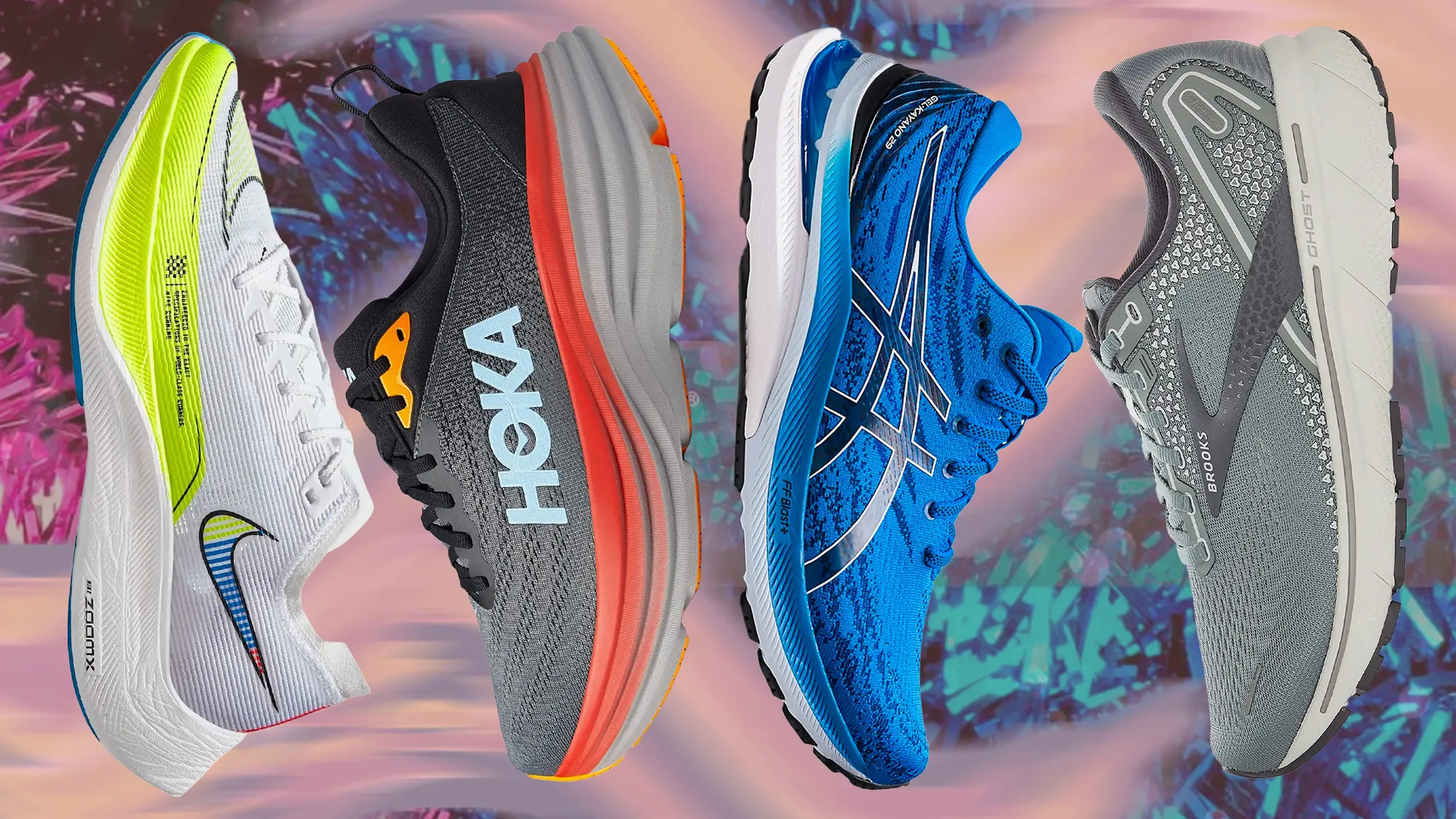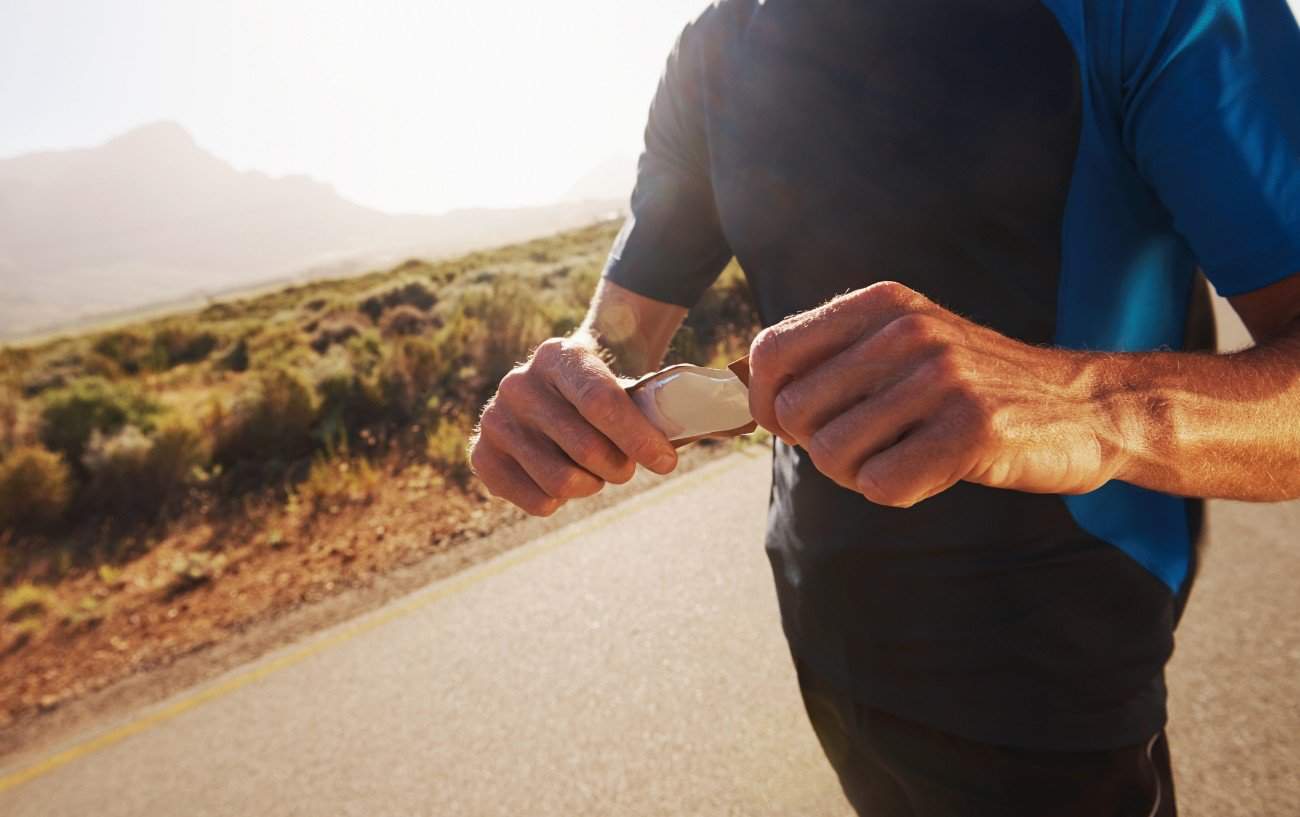

Featured
When To Take Energy Gels
Modified: August 19, 2023
Discover when to take energy gels and maximize your performance with our featured tips.
Introduction
Welcome to the world of energy gels, where fueling your body during physical activity has never been easier. Whether you’re a seasoned athlete or just starting out on your fitness journey, energy gels can provide the necessary boost to help you perform at your best. In this article, we will explore what energy gels are, their benefits, factors to consider before taking them, the best times to consume them, how to take them effectively, and potential side effects to be aware of.
Energy gels are concentrated, portable, and easily digestible sources of carbohydrates, electrolytes, and sometimes caffeine. They are commonly used by athletes for endurance activities such as running, cycling, and triathlons, as well as other high-intensity exercises. When consumed, energy gels quickly deliver a burst of energy to the muscles, replenishing glycogen stores and helping to delay fatigue.
One of the primary benefits of energy gels is their convenience. Unlike bulkier snacks or drinks, energy gels come in small, lightweight packages that can be easily carried in a pocket or belt. This makes them ideal for outdoor activities or races where stopping to eat may not be feasible. Additionally, energy gels are designed to be consumed without the need for chewing, making them quick and easy to consume on the go.
Before diving into the world of energy gels, it’s important to consider a few factors. Firstly, it’s essential to consult with a healthcare professional or sports nutritionist before incorporating energy gels into your routine, especially if you have any underlying health conditions or dietary restrictions. They can provide personalized guidance based on your specific needs and goals.
Another factor to consider is the timing of consumption. Energy gels are most effective when taken before and during extended periods of intense exercise. This helps to maintain a steady supply of energy throughout the activity, preventing a sudden crash in performance. Taking energy gels too early or too late may not provide the desired benefits, so it’s crucial to understand the timing that works best for your body and activity level.
In the following sections, we will explore the optimal times to take energy gels, how to take them effectively, and potential side effects to be aware of. By understanding these factors and incorporating energy gels into your fueling strategy, you can maximize your performance and reach new heights in your fitness journey.
What are Energy Gels?
Energy gels are specially formulated nutritional products that provide a concentrated source of carbohydrates, electrolytes, and sometimes caffeine to fuel the body during physical activity. They are typically packaged in small, portable pouches and have a gel-like consistency, making them easy to consume on the go. Energy gels are designed to be quickly absorbed by the body, providing a rapid and sustained source of energy to help athletes perform at their best.
The primary ingredient in energy gels is carbohydrates, which are the body’s main source of fuel during exercise. These carbohydrates can come in various forms, such as maltodextrin, glucose, fructose, or a combination of them. By consuming energy gels, athletes can replenish their glycogen stores and maintain optimal levels of blood sugar, which is crucial for sustained endurance and performance.
In addition to carbohydrates, energy gels often contain electrolytes, such as sodium, potassium, and magnesium. Electrolytes play a vital role in maintaining fluid balance, muscle function, and nerve signaling. During intense physical activity, electrolytes are lost through sweat, and their replacement is essential to prevent dehydration and muscle cramping. Energy gels provide a convenient way to replenish these electrolytes on the go, helping athletes stay hydrated and perform at their peak.
Some energy gels also contain caffeine, a natural stimulant that can enhance alertness, focus, and performance. Caffeine has been shown to reduce perceived exertion, increase endurance, and improve overall athletic performance. However, it’s essential to note that caffeine affects individuals differently, and some people may be more sensitive to its effects. It’s recommended to start with a low caffeine content if you’re not accustomed to it and monitor how your body responds.
Overall, energy gels are designed to provide a convenient and effective way to fuel the body during physical activity. They offer a portable and easily digestible source of carbohydrates, electrolytes, and sometimes caffeine to help athletes maintain energy levels, improve endurance, and enhance performance. Incorporating energy gels into your fueling strategy can contribute to a more successful and enjoyable workout or race experience.
Benefits of Energy Gels
Energy gels provide several benefits for athletes and active individuals. Let’s explore some of the key advantages:
1. Convenient Source of Energy: Energy gels offer a quick and convenient source of fuel during physical activity. Their compact size and gel-like consistency make them easy to carry and consume while on the move. Unlike heavier snacks or drinks, energy gels can be consumed without the need to chew, allowing for efficient and hassle-free energy replenishment.
2. Rapid Absorption: Energy gels are designed to be rapidly absorbed by the body, providing a quick surge of energy. The carbohydrates in energy gels are broken down into glucose, which can be readily used by the muscles for fuel. This fast absorption allows athletes to experience an almost immediate boost in performance, preventing energy depletion and enhancing endurance.
3. Sustained Energy: Energy gels deliver a steady supply of energy over an extended period. The combination of carbohydrates and electrolytes in energy gels helps to maintain optimal blood sugar levels and replenish depleted glycogen stores. This sustained release of energy can help delay fatigue, allowing athletes to perform at a higher intensity for longer durations.
4. Improved Hydration: Many energy gels contain electrolytes, such as sodium and potassium, which are crucial for maintaining proper fluid balance in the body. Electrolytes help to optimize hydration levels, prevent cramping, and support overall muscle function. By consuming energy gels that include electrolytes, athletes can stay properly hydrated during intense exercise.
5. Enhanced Mental Focus: Some energy gels contain caffeine, a natural stimulant that can improve mental focus and alertness. Caffeine has been shown to reduce perceived exertion and increase endurance, allowing athletes to push their limits. It can also enhance cognitive function, helping to maintain a clear mind and stay focused during prolonged exercise.
6. Versatile and Customizable: Energy gels come in a variety of flavors and formulations, allowing athletes to choose the ones that suit their preferences and dietary needs. They are available in different carbohydrate compositions, caffeine levels, and electrolyte concentrations, providing versatility to accommodate individual training goals and requirements.
Overall, the benefits of energy gels make them a valuable tool for athletes and active individuals seeking to optimize their performance and endurance. With their convenience, rapid absorption, sustained energy release, hydration support, mental focus enhancement, and customization options, energy gels can play a crucial role in maximizing athletic potential during training sessions, competitions, and long-distance events.
Factors to Consider Before Taking Energy Gels
While energy gels can be beneficial for fueling your body during physical activity, it’s important to consider certain factors before incorporating them into your routine. Here are some key factors to keep in mind:
1. Individual Needs and Goals: Every athlete is unique, with different nutritional needs and performance goals. Before taking energy gels, consider consulting with a healthcare professional or sports nutritionist who can assess your specific dietary requirements and provide personalized recommendations. This will ensure that you have a fueling strategy tailored to your individual needs and optimize your athletic performance.
2. Health Status and Dietary Restrictions: If you have any underlying health conditions or dietary restrictions, it’s crucial to seek professional advice before using energy gels. Certain medical conditions or dietary concerns may require modifications or specific considerations when using energy gels. A healthcare professional or sports nutritionist can guide you on how to incorporate energy gels safely and effectively into your routine.
3. Experimentation and Timing: It may take some experimentation to determine the timing that works best for you when it comes to using energy gels. The effectiveness of energy gels can vary depending on factors such as the duration and intensity of your exercise, your individual metabolism, and personal preferences. Start by testing different timing strategies during training sessions to find the approach that optimizes your performance and energy levels.
4. Water Intake: Energy gels are concentrated sources of carbohydrates and electrolytes, and they should be consumed with sufficient water. The water helps with the digestion and absorption of the gel, ensuring that the nutrients are effectively delivered to your muscles. Make sure to hydrate adequately when using energy gels to optimize their benefits and prevent dehydration.
5. Allergies and Sensitivities: Energy gels may contain common allergens, such as gluten, dairy, soy, or nuts. Read the product labels carefully to ensure that the energy gel does not contain any ingredients to which you are allergic or sensitive. If you have any dietary restrictions or concerns, choose energy gels that are specifically marketed as allergen-free or consult with a healthcare professional for suitable alternatives.
6. Checking for Expiry Dates: Before consuming any energy gel, check the expiry date to ensure that it is still within the recommended timeframe. Expired energy gels might not deliver the desired benefits or could potentially cause digestive issues. It’s always advisable to use fresh and properly stored energy gels to guarantee their effectiveness and safety.
By considering these factors before incorporating energy gels into your routine, you can ensure that you are making informed choices that align with your individual needs and goals. Remember that everyone’s nutritional requirements and preferences may vary, and it’s crucial to personalize your fueling strategy to optimize your performance and overall well-being.
Best Times to Take Energy Gels
Timing is crucial when it comes to consuming energy gels for optimal performance and energy replenishment. Here are some of the best times to take energy gels:
1. Pre-Exercise: Consuming an energy gel 15-30 minutes before starting your exercise can help top up your glycogen stores and provide a source of readily available energy. This can be especially beneficial for longer endurance activities, as it ensures that your body has a sufficient fuel reserve to sustain your performance throughout the exercise.
2. During Prolonged Exercise: For activities lasting more than an hour, it is recommended to consume an energy gel every 45-60 minutes. This helps maintain a steady supply of carbohydrates, preventing energy depletion and delaying the onset of fatigue. Taking energy gels during extended exercise is particularly important to provide ongoing fuel for your muscles and sustain your energy levels.
3. During Intense or High-Intensity Workouts: If you’re engaging in high-intensity workouts, such as interval training or sprint sessions, incorporating energy gels can be beneficial. These intense activities rapidly deplete glycogen stores, and using energy gels during breaks or recovery periods can help replenish energy levels quickly, allowing you to sustain your efforts.
4. Towards the End of Long-Distance Events: In long-distance races or events, like marathons or ultramarathons, it’s common to experience a drop in energy levels towards the latter stages. Consuming an energy gel in the last few miles or kilometers can provide a much-needed boost to help you cross the finish line strong. It can be a mental and physical pick-me-up to push through fatigue and maintain your pace.
5. As Needed and Based on Personal Preferences: Ultimately, the best time to take energy gels may vary depending on individual preferences and the specific demands of your activity. Some athletes prefer to take energy gels at regular intervals throughout their exercise, while others may rely on them when they feel a drop in energy. Experiment with different strategies during training sessions to identify what works best for you and your body’s unique requirements.
Remember, it’s vital to stay hydrated when taking energy gels. Pairing them with water or a sports drink ensures proper absorption and helps prevent dehydration. Additionally, pay attention to how your body responds to the timing and frequency of energy gel consumption, as individual tolerances and preferences can vary. By strategically timing your energy gel intake, you can maintain steady energy levels, delay fatigue, and enhance your overall performance during exercise.
How to Take Energy Gels Effectively
Taking energy gels effectively involves more than just opening a packet and consuming the gel. Here are some tips to help you make the most out of your energy gel consumption:
1. Read and Follow Product Instructions: Each energy gel brand may have specific instructions for consumption. Read the packaging carefully and follow the recommended serving size and guidelines provided by the manufacturer. Adhering to these instructions ensures that you consume the optimal amount of nutrients and maximize the benefits of the energy gel.
2. Stay Hydrated: Energy gels are designed to be consumed with water or a sports drink. This helps with the digestion and absorption of the gel, ensuring that the nutrients are effectively delivered to your muscles. Aim to drink at least a few sips of water after consuming an energy gel to ensure proper hydration and optimize the gel’s performance.
3. Practice Timing and Delivery: Experiment with the timing of gel consumption during training sessions to find what works best for you. Some athletes find it helpful to take small sips of an energy gel over a period of time, while others prefer consuming the entire gel at once. Pay attention to how your body responds and adjust your gel intake strategy accordingly.
4. Avoid Consumption on an Empty Stomach: Consuming energy gels on an empty stomach may cause discomfort or gastrointestinal distress for some individuals. To avoid this, consider having a light meal or snack before taking the gel. This helps to ensure that the gel is not the sole source of fuel in your stomach and can help prevent any potential digestive issues.
5. Test During Training: It’s important to test different energy gel brands and flavors during your training sessions to find the ones that work best for you. Not all energy gels may agree with your taste preferences or digestive system, so experimenting beforehand allows you to select the gels that you can comfortably consume during races or important events.
6. Carry Energy Gels Conveniently: For activities where you need to carry energy gels, invest in a running belt, pouch, or other suitable methods of storage. Make sure they are easily accessible so that you can consume the gels without disrupting your workout or causing any delays. Being prepared and organized ensures that you have the fuel you need when you need it.
Everyone’s body responds differently, so it’s important to personalize your approach to taking energy gels. By following these tips and experimenting with different strategies during your training, you can find the most effective way to take energy gels that supports your athletic performance and helps you achieve your goals.
Potential Side Effects of Energy Gels
While energy gels can provide numerous benefits for athletes, it’s important to be aware of potential side effects that may occur. Here are some potential side effects to consider:
1. Digestive Issues: Energy gels can sometimes cause gastrointestinal discomfort, including bloating, stomach cramps, or diarrhea. This is often due to the concentrated carbohydrate content and the osmolality of the gel. To minimize these effects, make sure to consume the gel with water or a sports drink and avoid consuming large quantities at once. Experimenting with different brands and flavors may also help find energy gels that are more easily digested.
2. Allergic Reactions: Some energy gels may contain ingredients that can cause allergic reactions in individuals with specific sensitivities. Common allergens, such as gluten, dairy, soy, or nuts, may be present in certain energy gels. It’s important to carefully read the product labels and choose energy gels that are free of any ingredients to which you are allergic or sensitive.
3. Caffeine Sensitivity: Some energy gels contain caffeine, which is a natural stimulant. While caffeine can provide performance benefits for many athletes, some individuals may be more sensitive to its effects. Symptoms of caffeine sensitivity can include jitteriness, increased heart rate, nervousness, or impaired sleep. If you are sensitive to caffeine or have any pre-existing medical conditions, it’s wise to choose caffeine-free energy gels or consult a healthcare professional before using them.
4. Dehydration: Energy gels, especially those high in carbohydrates, can be osmotically concentrated. This means they draw water from the body into the digestive system, potentially leading to dehydration if not consumed with sufficient fluids. Ensure that you drink adequate water or a sports drink along with the energy gel to maintain hydration levels and prevent dehydration during exercise.
5. Overconsumption of Carbohydrates: While energy gels are designed to provide a concentrated source of carbohydrates, it’s important not to overconsume them. Excessive carbohydrate intake, especially without adequate physical activity, can lead to an imbalance in blood sugar levels and potential weight gain. It’s essential to use energy gels as part of a well-balanced and individualized fueling strategy that takes into account your specific activity level and nutritional needs.
6. Insufficient Nutrient Variety: Energy gels mainly provide carbohydrates and electrolytes, but they may not offer a wide range of other essential nutrients found in whole foods. Relying solely on energy gels for prolonged periods without incorporating a variety of nutrient-dense foods into your diet may result in nutrient deficiencies. To ensure optimal overall nutrition, energy gels should be supplemented with a well-rounded diet that includes wholesome foods.
If you experience any severe or persistent side effects after consuming energy gels, it is important to consult with a healthcare professional. They can provide personalized advice and help you determine the best course of action based on your specific circumstances.
Conclusion
Energy gels are a convenient and effective tool for athletes and active individuals to fuel their bodies during physical activity. With their concentrated blend of carbohydrates, electrolytes, and sometimes caffeine, energy gels provide a quick source of energy, enhance endurance, and support hydration. However, it’s crucial to consider various factors before incorporating energy gels into your routine.
First and foremost, consulting with a healthcare professional or sports nutritionist is essential to establish a fueling strategy that aligns with your individual needs and goals. Additionally, being mindful of your health status, dietary restrictions, and potential allergies is crucial when selecting energy gels. It’s important to read product labels, understand the timing of consumption, and test different gels during training sessions to find the ones that work best for you.
While energy gels offer many benefits, it’s important to be aware of potential side effects such as digestive issues, allergies, caffeine sensitivity, dehydration, and overconsumption of carbohydrates. By staying hydrated, consuming energy gels responsibly, and incorporating a variety of nutrient-dense foods into your diet, you can mitigate these potential side effects and maintain a balanced approach to your overall nutrition.
In conclusion, energy gels can be an invaluable tool in your fitness journey, providing the necessary fuel to optimize your performance and endurance during physical activities. When used effectively, energy gels can contribute to improved energy levels, enhanced hydration, and sustained performance. By considering the factors discussed in this article and adopting a personalized approach, you can incorporate energy gels into your fueling strategy in a safe and effective manner, ultimately supporting your athletic goals and helping you reach new heights of achievement.
